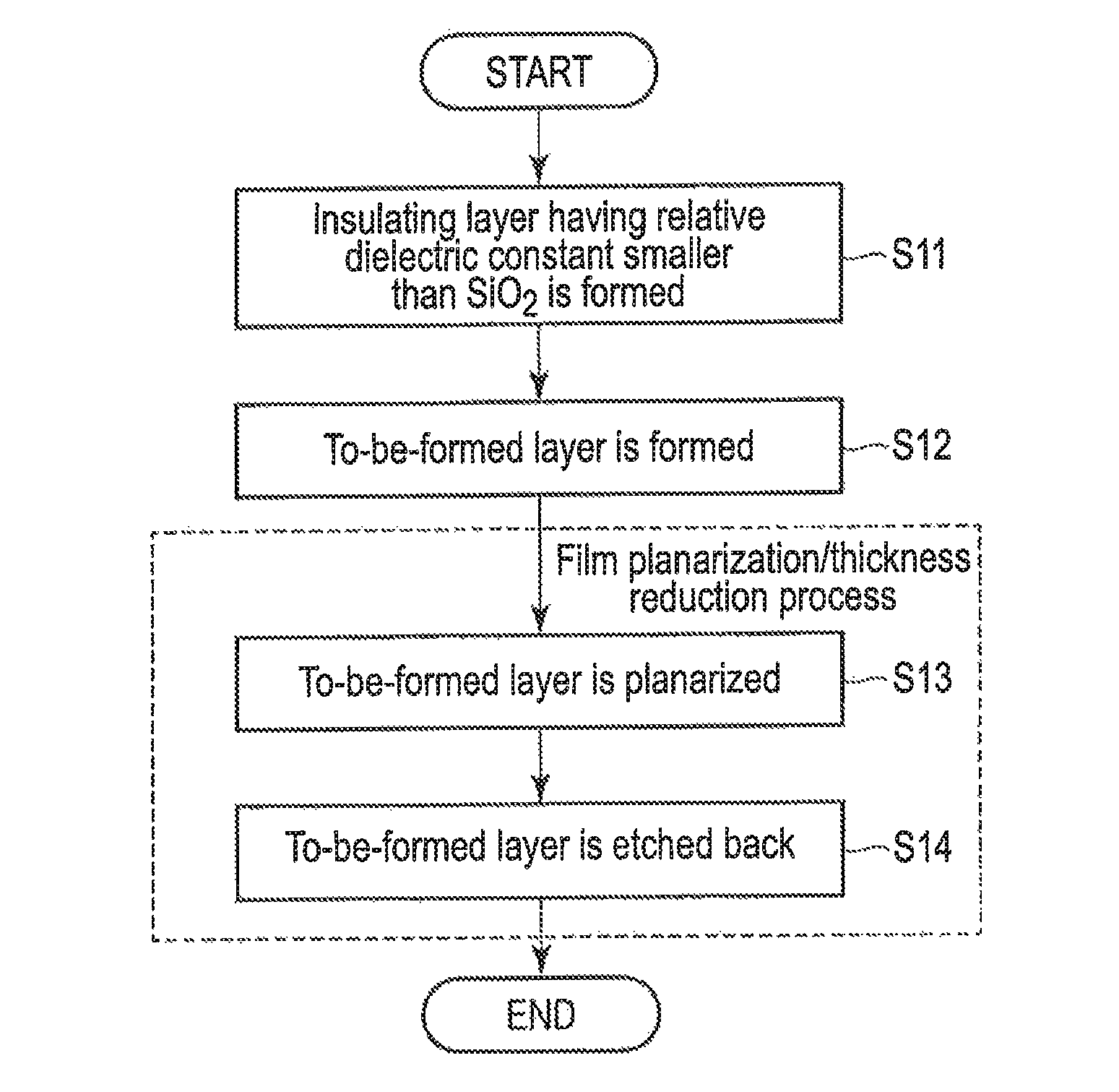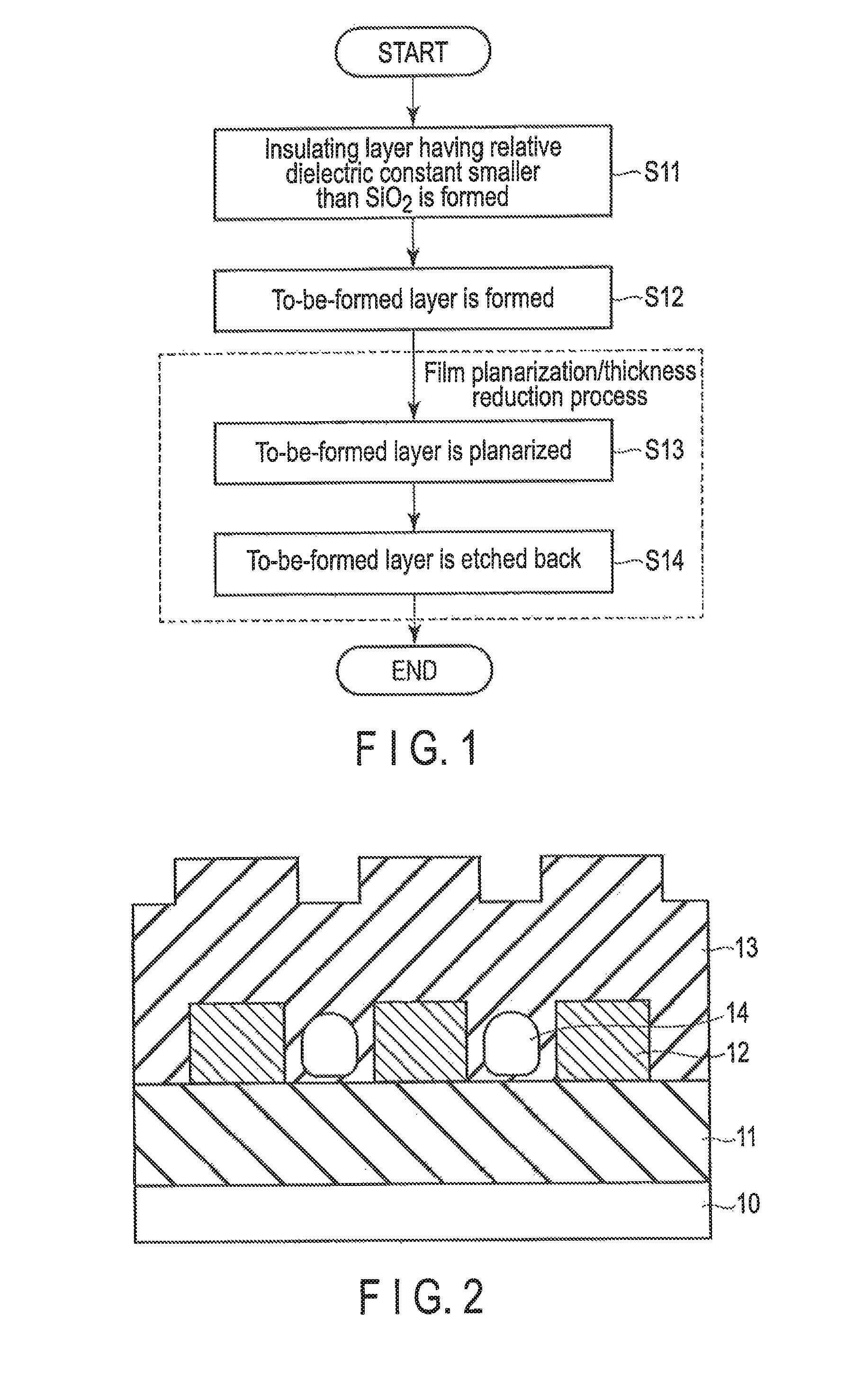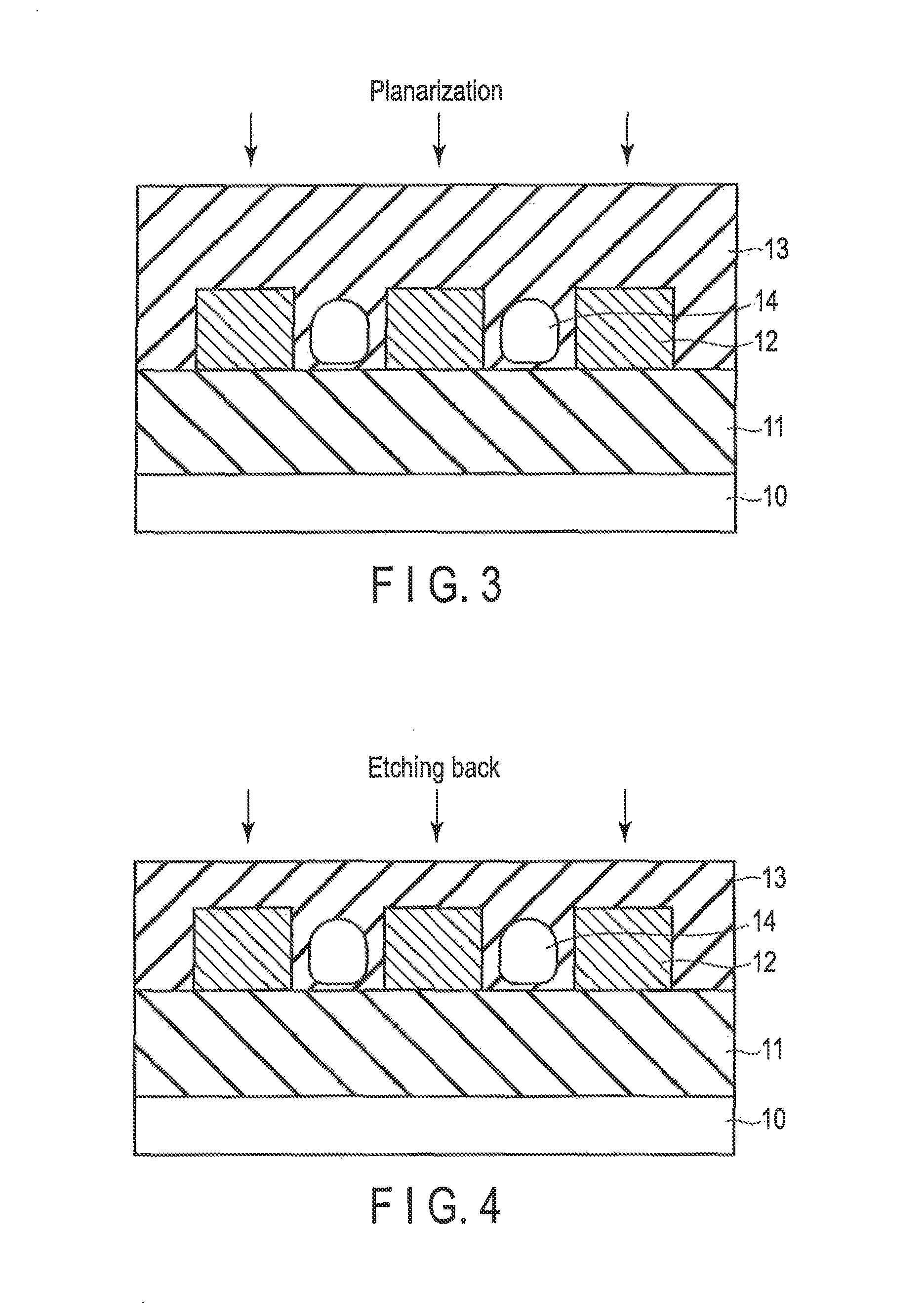Method of manufacturing semiconductor device
a manufacturing method and technology of semiconductor devices, applied in the direction of manufacturing tools, lapping machines, abrasive surface conditioning devices, etc., can solve the problems of air gap portion shear damage, surface damage of to-be-processed film, etc., and achieve the reduction of yield and reliability of the device, and the number of scratches on the surface of to-be-processed film 13
- Summary
- Abstract
- Description
- Claims
- Application Information
AI Technical Summary
Benefits of technology
Problems solved by technology
Method used
Image
Examples
embodiments
[0029]Embodiments will be explained using FIGS. 1 to 27. The embodiments are a film planarization / thickness reduction method of a to-be-processed film 13 which is formed on an insulation layer (for example, an air gap 14 or a porous layer 15) that has a relative dielectric constant smaller than that of silicon oxide (SiO2) and a low mechanical strength. More specifically, the film planarization / thickness reduction method has a step of planarizing the to-be-processed film 13 having a convex potion and concave potion on the air gap 14 or the porous layer 15 by a predetermined planarization method and a step of thinning the to-be-processed film 13 by etching back the to-be-processed film 13. With these steps, a desired flatness can be obtained while suppressing scratches and cracks generated to the to-be-processed film 13. The embodiments will be explained below in detail.
[1. Method of Manufacturing Semiconductor Device According to Embodiment]
[0030]A manufacturing method of a semicond...
first example
[0176]FIGS. 23A to 23D are sectional views showing flows in a first example according to the first chemical polishing method and are sectional views showing a to-be-processed film 13 having an irregularity 31.
[0177]As shown in FIG. 23A, the to-be-processed film 13 has the irregularity 31 on its surface. The irregularity 31 has a convex portion 31a and a concave portion 31b. The distance between a surface of the convex portion 31a and a surface of the concave portion 31b (the depth h1 of the irregularity 31) is, for example, about 30 nm or more to 5000 nm or less.
[0178]As shown in FIG. 23B, a surfactant adsorbs onto the to-be-processed film 13 as a surface layer 32. The surfactant (surface layer 32) adsorbed onto the surface of the to-be-processed film 13 acts as a surface protection film. As the surfactant, an anionic surfactant, a cationic surfactant, an amphoteric surfactant and a non-ionic surfactant can be used. Furthermore, the surfactant can be selected among surfactants of an...
second example
[0184]In a second example, as a surface layer 32, polyvinyl pyrrolidone (PVP) that is a cationic surfactant is formed on the surface of the to-be-processed film 13 made of SiO2 (refer to FIG. 23C). In the second example, since the cationic surfactant is used, the surface layer 32 easily adsorbs onto the to-be-processed film 13 made of SiO2 the surface charge of which is negative, and thus the surface layer 32 can be formed easily. In addition to the above mentioned, as a cationic surfactant, polyethyleneimine (PEI) can also be used.
[0185]The weight average molecular weight (Mw) in terms of polyethylene glycol of PVP used in the second example, measured by water-based GPC (gel permeation chromatography) is 20,000 or more, preferably, 200,000 or more to 1,500,000 or less, and more preferably, 300,000 or more to 1,500,000 or less. If the weight average molecular weight is within the above ranges, friction due to contact with a processing body 34 made of a urethane resin can be reduced....
PUM
 Login to View More
Login to View More Abstract
Description
Claims
Application Information
 Login to View More
Login to View More - R&D
- Intellectual Property
- Life Sciences
- Materials
- Tech Scout
- Unparalleled Data Quality
- Higher Quality Content
- 60% Fewer Hallucinations
Browse by: Latest US Patents, China's latest patents, Technical Efficacy Thesaurus, Application Domain, Technology Topic, Popular Technical Reports.
© 2025 PatSnap. All rights reserved.Legal|Privacy policy|Modern Slavery Act Transparency Statement|Sitemap|About US| Contact US: help@patsnap.com



